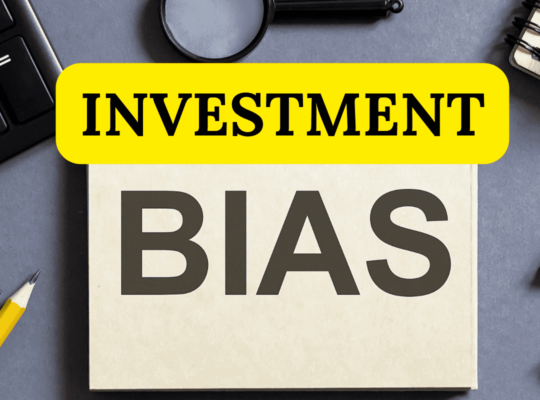
As history has shown, we are all smart human beings who try to increase our wealth sensibly. However, when it comes to financial markets, it is widely acknowledged that emotions and psychology often impact our actions, prompting us to react in unusual and unreasonable ways. Behavioural finance is an exciting area of finance that blends psychology, economics, and finance to understand why individuals make illogical decisions in financial markets. In this blog-post, we will try to see some of the biggest biases that may be seen quite clearly in the financial markets.
Loss Aversion Bias
Loss aversion refers to an investor’s high preference for averting or preventing losses over earning gains. The constant fear of loss causes inactivity. According to studies, the agony of loss is twice as intense as the delight of gain of the same size. Investors choose to do nothing, despite facts and analysis pointing to a certain action that the investor believes would result in a loss. Sticking onto lost stocks or altogether preventing asset classes such as equity when there is a lot of data and analyses supporting long term wealth creation from the market are examples of this bias. Investors often examine the performance of their portfolios, and any short-term loss in the portfolio leads to inactivity as the preferable choice. It is normal for inexperienced investors to make little profits while holding onto larger losses, believing that prices would recover shortly.
Winner’s Curse
The propensity to ensure that a competitive offer is won despite paying too much for the item is called winner’s curse. While behaviourally it is a success, financially it may be a failure. It is essentially exaggerating the worth of a good and then coming out more disadvantaged than the losers. It is more commonly associated with mistakes of perception.
Gambler’s fallacy

Anticipating completely random occurrences based on what has taken place in the past, or creating patterns where none exist. It is the mistaken belief that if something happens more frequently than normal, it is likely to occur less often in the future, or that if something happens less frequently than normal during a period, it will happen more frequently in the future (presumably to restore equilibrium). It is also obvious in Indian stock markets: the leaders who led the 2008 surge are now in the junkyard, and others who succumbed to such bias are suffering significant losses.
Ownership Bias
The things we own seem to be the most precious to us. It is also known as the endowment effect and refers to the propensity to place a larger value on something than others would value the same. It may induce investors to keep investments that they would not acquire at the present price. This frequently results in not selling a stock, even when all signs indicate that it should be sold.
Herd Mentality
This is the result of uncertainty and the notion that others may have superior knowledge, which causes investors to mimic the investing decisions of others. Such decisions may appear reasonable, and even validated by short-term success, but they frequently result in bubbles and collapses. Small investors continue to monitor other market participants for evidence before getting involved when the markets have become overvalued and are prepared to drop. Most people don’t deviate from the pack. Famous economist John Maynard Keynes stated that – “It is preferable for reputations to fall short normally than to do well in unusual ways.” Most retail traders lose money in the stock market due to the fact that they enter at a period of excitement, that is when the markets are excessively hot, and they incline to adopt a herd mentality, often watching news channels or following their favorite finfluencers, that reinforce their beliefs.
Confirmation Bias

This is one of the most typical biases we see in the financial markets. It is essentially the inclination to seek for justifications and facts that support one’s assumptions or theories. It typically occurs when a trader is holding on to a losing position and seeks additional reasons to defend his position in order to maintain the trade that he has originally taken. Such Bias strengthens when a trader holds on to a lost position, as taking a loss is a far more difficult psychological task. Extending this tendency leads to in-group bias. We prefer to surround ourselves with others who reflect our perspectives. Not only does this give us a false feeling of security in our personal beliefs, but it also makes us to be suspicious with those who attempt to challenge how we feel.
Anchoring Bias
Anchoring is an emotional bias that reflects the human inclination to make judgments based on the initial bit of information presented. Investors hang onto out-dated knowledge and base their choices on it. New information is labelled as inaccurate or irrelevant, and it is ignored during the decision-making process. This bias is demonstrated by investors who await the “right price” to sell despite fresh facts indicating that the projected price is now no longer correct. For instance, they may be holding on to losing stocks in the hope that the price would recover to levels that are no longer sustainable based on the latest information, affecting total portfolio results. Actually, the decision should be made based only on the current price and value differential in light of current facts, rather than on historical pricing information.
If we refrain from the biases listed above, we may be able to master our minds and finances.





